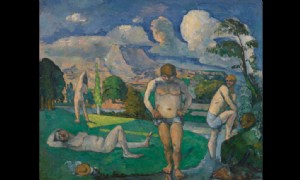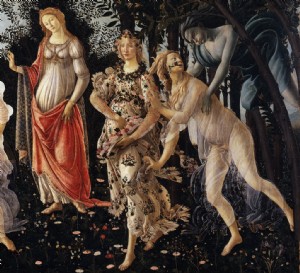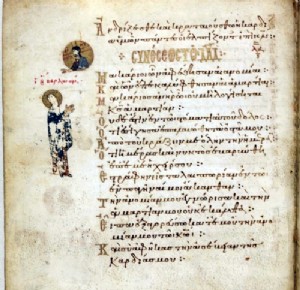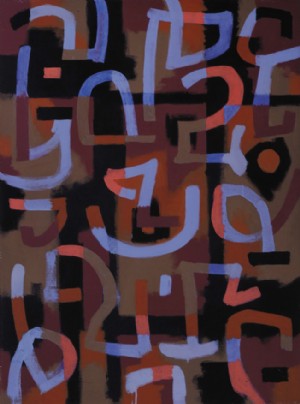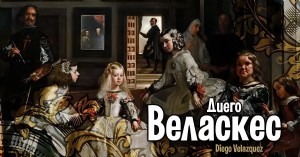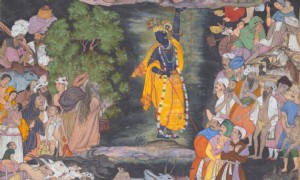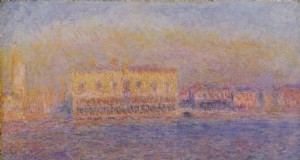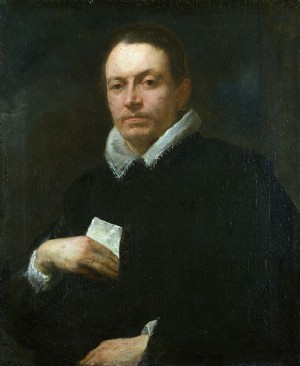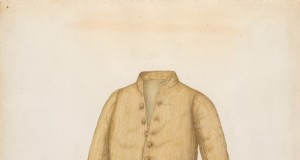ミケランジェロメリシダカラヴァッジョは9月28日に生まれました。 ベルガモ近くの小さな村で1571年、 彼の名前は世界の芸術の歴史に残っています-カラヴァッジョ。偉大な芸術家の生年月日は、彼の訓練のための存続契約のおかげでのみ知られるようになりました、 当時、かなり有名な画家シモーネ・ペテルツァーノと将来の芸術家の両親によって締めくくられました。ドキュメント、 1584年、 彼の結論の時点で、 ミケランジェロメリシは13歳でした。ペテルツァーノは偉大なティツィアーノの学生であり、ミラノに住んでいました。 カラヴァッジョの創造的なキャリアが始まった場所です。
クリエイティブパスの始まり
ミケランジェロの母親、 ルシア・アラトリ、 建築家兼デコレータのフェルモ・メリージの2番目の妻でした。 フランチェスコ・スフォルツァに仕えた人、 侯爵ダカラヴァッジョの称号を持った人。合計で、 家族には5人の子供がいました。ミケランジェロの人生の最初の年はミラノで過ぎました、 家族がベルガモに逃げたところから、 疫病から逃げる。 NS、 流行は将来の芸術家の父と叔父を惜しまなかった、 家族全員が母親の世話をしていましたが、 誰が大いに必要としていました。
1584年にシモーネペテルツァーノの工房に入る、 ミケランジェロはコロンナ公爵と契約を結び、 1583年に亡くなったカラヴァッジョ侯爵の相続人。 若い画家のすべての作品を購入することにした、 彼がペテルツァーノの工房に入るとすぐに、 彼の生涯にわたってカラヴァッジョの忠実な後援者になりました。
カトリック教会の長、 絵画の最大の顧客の1つでした 教皇シクストゥス5世でした アートの新しいトレンドを支持した人、 ロンバルディアで出現し始めたばかりでした。現時点では、 ミラノ公国、 スペインの支配下で、 厳格な芸術的および宗教的教義の中心になりました。特に、 ヨーロッパとイタリアの芸術はマニエリスムの支配下にありました、 しかし、それと並行して、ボローニャ-ローマのアカデミズムがありました。 偉大なヴェネツィアとローマの画家の模倣に限定されています。ロンバルディアでは、 一方で、 アーティストはマニエリスムから離れ、人生の現実的な反映に焦点を合わせ始めました。この傾向は、ミケランジェロメリシの創造的なスタイルの形成に大きな影響を与えました。
不幸にも、 カラヴァッジョが来た時期のミラノのワークショップ、シモーネ・ペテルツァーノの活動についてはほとんど知りません。ジョバンニパオロロマッツォは1584年に、ペテルツァーノが大きな需要を喜んだと書いています。 一貫して彼の作品を楽しんだ、 「エレガントかつ簡単に」作られました。ミラノ近郊のガレニャーノ教会にある彼のフレスコ画を見ると、 または「Venus」や「CupidandTwo Satyrs」(Corsiniコレクション、 ニューヨーク)、 マニエリスムの明確な影響を見ることができます、 新しいロンバードのリアリズムと混ざり合っています。
カラヴァッジョの初期の作品では、 ペテルツァーノスタイルの影響をはっきりと見ることができます、 ルネサンスの偉大な巨匠の絵画に関する継続性はありますが、 ティツィアーノなど、 ジョルジョーネ、 ジョヴァンニベッリーニまたはレオナルドダヴィンチ、 明らかです。後者の仕事、 つまり、「岩窟の聖母」、 カラヴァッジョ、 もちろん、 サンフランチェスコグランデ教会で見られる、 ミラノ。また、 ベルガモに戻って、 アーティストはロレンツォ・ロットの絵を賞賛しました、 その特別な感情的な緊張のために際立っていました。
美術史家のミナ・グレゴリーは、若い芸術家がアンドレア・マンテーニャの作品を注意深く研究したことを説得力を持って証明しています。 これは、カラヴァッジョが描いた唯一のフレスコ画を明確に示しています。 間違いなく、この壮大な遠近法の達人の絵のスタイルの影響を受けて描かれました。カラヴァッジョもマントヴァにいました、 そこで彼はジュリオ・ロマーネの記念碑的な作品を調べました。
その間、 ミラノでは、 本物の学校ができました、 カンピ兄弟の絵のようなマナーの影響を受けました。初期化、 若いアーティストは彼らの作品のテーマを開発しました、 主に実生活に焦点を当て、 彼らはそこからインスピレーションを得ました。この創造的なグループの絵画は、当時の美術のすべての革新を取り入れました。
キアロスクーロの効果を発見するには、 カラヴァッジョは、盛期ルネサンスの巨匠、ジョヴァンニ・ジローラモ・サヴォルドの作品に助けられたのかもしれません。 若い画家が賞賛した人。それから彼は有名な芸術家ソフォニスバ・アングイッソラの肖像画を作成しました、 若い頃に偉大なミケランジェロに精通していた人。ソフォニスバは、日常生活から取り入れた風俗画を制作しました。彼女の絵の1つで見ることができます、 石炭とチョークで作られた、 彼女の幼い息子の画像、 その癌は指で噛まれました。彼の最初の絵の若いカラヴァッジョプロットを促したのはこの絵でした、 彼はローマに到着した直後にそれを描いた。
不幸にも、 カラヴァッジョの創造的な形成については、仮説的にしか話すことができません。美術史家のベレンソンによると、 ジョルジョーネはカラヴァッジョのスタイルの発展の基礎でした。ロンバード学校の影響もはっきりと読まれています。ロベルト・ロンギは次のように書いています。 ロンバルディアから来た芸術家のグループは、単純な民主主義の芸術を作成した尊敬されていました…彼らの絵には多くの人間の感情がありました、 内なる光と宗教的なエクスタシーはまったくありません。色彩の決定、 白黒の効果はそれらの間で調整され、自然と検証されました。自然と人間をシンプルかつ真に表現しようとしたリアルなアートでした。 」
ペテルツァーノ、 当時は非常に進歩的な教師でしたが、 また、カラヴァッジョの芸術的なスタイルの形成にも重要な役割を果たしました。研修中、 彼は絵画技法に焦点を合わせ、 それなしでは、卓越性の高さを達成することは不可能です。
18歳にはならない。 カラヴァッジョ、 独立して働くことへの憧れに満ちて、 ローマに引っ越しました。彼の旅のルートは不明です、 途中で彼が偉大な巨匠の作品の多くを見たと推測することしかできません。ローマで、 高位聖職者のパンドルフォ・プッチは若い男性に避難所を提供します。カラヴァッジョの最初の作品には、「トカゲに噛まれた少年」(1594年、 国立美術館、 ロンドン)、 「果物のかごを持った青年」(1593年、 ボルゲーゼ美術館、 ローマ)、 「梨を掃除する少年」(1593)。
カラヴァッジョの最初の自画像は、絵画「ミュージシャン」(1595年、 メトロポリタン美術館、 ニューヨーク)、 アーティストは、他の2人の若いミュージシャンとキューピッドを背景に自分自身を描いた。多くの美術史家は、アムールのイメージを一種のホモエロティシズムのシンボルと見なしています。 カラヴァッジョの同性愛に対する傾向を示しています。後で、 画家は重病になり、 しかし奇跡的に回復し、そして、 ほぼすぐに、 「病めるバッカス」(1953年、 ボルゲーゼ美術館、 ローマ)、 これは彼の2番目の自画像です。
カラヴァッジョは強力な枢機卿デルモンテによって後援されています、 アーティストが多くの宗教画を作成する人のために。絵画「PenitentMagdalene」(1595-1597、 ドーリアパンフィーリギャラリー、 ローマ)アーティストが作成した最初の女性の画像が表示されます。同じ時期に、 画家は2番目の「バッカス」(1596年、 ウフィツィ美術館、 フィレンツェ)、 今回は健康に満ちています。後で、 カラヴァッジョは彼の最初の、 しかし、最後からはほど遠い、 正義と衝突する。
しかし、なぜ若い芸術家はローマを選んだのですか?カラヴァッジョの伝記作家は、イタリアの文化的首都の選択に同意します。 したがって、全世界、 カラヴァッジョの並外れた野心によるものでした、 史上最高の芸術家になることを夢見ていた人。周りの人よりも神に恵まれていると信じていたので、何度も法律に違反したからでしょうか。
当時のローマは本当に繁栄していました。サンピエトロ大聖堂の建設、 当時は全世界で最大の建築物でしたが、 完了しました。大聖堂が建てられました、 サンジョバンニラテラノなど、 サンタマリアマッジョーレ、 テヴェレ川のリペッタの港が開いた、 それは本当に世界への玄関口になりました。教皇シクストゥス5世は、半島の才能ある画家全員をローマに招待しました。 そして多くの、 ロンバードを含む、 この訴えに従った。これはすべて、キリスト教の勝利を全世界に伝えることを目的としていました。
カラヴァッジョの生涯と同じように、 彼がローマに到着した正確な日付はわかりません。多分それは1591年か1592年でした。芸術家が教皇クレメンス8世の下で永遠の都に到着したという多くの証拠があります。
ローマに到着した若い芸術家は、おそらく彼と一緒にミラノで描かれたいくつかの帆布を持っていました。しかし、これらは機能します、 キャラクターとプロットの現実的な解釈で、 地元の人々の興味をそそることはほとんどできませんでした、 その好みがマニエリスムと古典主義を決定しました。ローマでの大いなる愛は、ミケランジェロとラファエロの作品のコピーを楽しんだ。当時非常に人気があった画家たちが アグネスティなど、 シオランテ、 タッデオ・ツッカロ、 救い、 ラファエリノダレッジョ、 CesarsNebbiaまたはGiuseppeCerzi、 芸術の世界史にほんのわずかな痕跡を残しました。
美術史家のキャラブは次のように書いています。「16世紀の終わりにローマに到着した若い芸術家、 昔の巨匠による絵画の柔和な模倣に限定する必要があっただけでなく、 だけでなく、彼らの理想主義を継承し、 芸術的な臆病、 そして、空の表面の描写方法を放棄することへの恐れ。絵画では、 これらのアーティストは、外部の類似性にのみ満足していました。 「どういうわけか生き残るために、 彼らは大衆の好みに服従し、人生を飾ることだけに従事することを余儀なくされました。一例は、アンニーバレ・カラッチの作品です。 ボローニャからローマに来た人。彼はファルネーゼ宮のギャラリーを飾るように依頼されました。すでに彼の創造的な計画の実施に取り組んでいる過程で、 彼は顧客と一般の人々の大きな困難と不信に直面しました。
同じことがカラヴァッジョでも起こりました。彼は街の貧しい地区に群がりました、 ロンバルディアからの他の多くの移民と同じ場所で、 同じ失業者のアーティスト、 命令を見越して生き残ろうとした彫刻家や石工。後で、 画家はなんとかロレンツォシチリアーノのサービスに入ることができました、 彼が彼の仲間の同胞に会ったスタジオで、 ロンゴ兄弟。
この期間中、 カラヴァッジョと彼の仲間は仕事で日々を過ごしました、 田舎を探索して楽しんでください。無駄な研究者たちは、この時代の芸術家の作品を探しました。おそらく彼は自分のために何かを書いたのだろう、 しかし、 明らかに、 これらの絵は買い手を見つけられませんでした。
それでも、 カラヴァッジョは裕福な慈善家の人の幸運に微笑んだ、 芸術的な趣味の男、 しかし、疑わしい評判で、 教皇の宮廷の高位聖職者、 モンシニョールパンドルフォプッチ。彼は枢機卿の兄弟でした、 誰、 ところで、 「臆病な」ベンヴェヌート・チェッリーニの世話もしました。
高位聖職者は器用さに魅了されました、 若い芸術家の才能と彼のゆるぎない、 爆発的なキャラクター。プッチはカラヴァッジョを彼の家に招待しました、 その存在を保証します。その芸術家、 彼の側では、 高位聖職者の優しさに感謝して、 最高の敬虔な教会の絵をコピーするという彼のための仕事をしなければなりませんでした。モンシニョールプッチは彼のすべての作品をレカナーティのカプチン修道院に送りました。 彼はかつて生まれ、人生の早い時期を過ごしました。このシリーズの作品は1つも届いていません。
たくさんの自由な時間と完全な創造的自由で、 カラヴァッジョは彼の作品のためにどんなプロットを選んでも、長い間それらについて熟考することができました。これで、アーティストの絵画「トカゲに噛まれた少年」(1954年頃、 ナショナルギャラリー、 ロンドンと、 2番目のオプション、 フィレンツェのLongyFoundation)は、モンシニョールプッチとの滞在中に設立されました。この絵は、ソフォニスバ・アングイッソラの有名な木炭画を彷彿とさせるようなものでした。トカゲが彼を噛んだ瞬間に、キャンバス上の若い男が描かれています。 そして彼は恐ろしく手を引き離します。絵画で初めて、 動きの瞬間が奪われ、記録されました。
ベレンソンによると、 カラヴァッジョのこの作品には、「革新に対する普遍的な必要性があります。 「慣習を破壊したいという願望。おそらく、寓話もここに隠れています。少年の裸の肩と耳の後ろに花があります。 若い男がローマの下位クラスに属していることを示します-売春婦と泥棒の世界、 カラヴァッジョは、肉体的な痛みと、必然的に愛に伴う苦しみに関連していました。アーティストのキャリアを通じて、 肉体的苦痛のイメージは、精神的および精神的苦痛と密接に関連していました。
カラヴァッジョはまた、プッチ滞在中に彼の有名な「リュート奏者」を書きました。今、写真はエルミタージュにあります、 サンクトペテルブルクで。ミュージシャンのイメージは、アーティストが選んだモデルの非常に典型的なものです。キャンバスの別のバージョンがあります、 メトロポリタン美術館に保管されています。 ニューヨークで。その上に同じ遊んでいる男の子が見えます、 しかし、彼の隣には花や果物は見当たりません。
アーティストが楽器を書き出す徹底性は驚くべきものです。リュート奏者の夢のような顔、 彼の視線の倦怠感、 すべては、若い男が想像力の中で彼の深い内なる世界に夢中になっていることを示唆しています。エルミタージュの写真のスコアには、「Voi sapete chio vato」(「You Know I Love You」)という興味深い碑文があります。誰がこの表彰を送ったのだろうか?写真「ミュージシャン」では、 前景はまた、聴衆に展開されたスコアを示しています、 半裸の歌手が持っています。しかし、ここで彼の手によって作られた碑文、 これまでのところ、誰も読むことができませんでした。
この時期のすべての作品が、 カラヴァッジョは若い男性だけに触発されました(女性の画像はありません)、 また、アーティストの型破りな方向性を示唆しています。彼の作品の最初の女性像は、絵画「PenitentMagdalene」でした。 1596年頃に描かれました。
カラヴァッジョがモンシニョールプッチの家を去った理由は不明です。おそらく、高位聖職者は非常に重い性向を持っていました。アーティストは再びローマの通りに現れます、 生計を奪われた。幸運にも、 画家の旧友、 ロレンツォ・シチリアーノのワークショップで彼と一緒に働いた-アーティストAntiveduto Gramatica、 ホームレスで貧しいカラヴァッジョを保護しました。文法は一般の人々とある程度の成功を収めましたが、 そのため、定期的な注文が提供されました。
しかし、不幸は貧しいカラヴァッジョを悩ませました、 彼はローマの熱で病気になりました、 それは半島全体に蔓延していた。アーティストのロンゴの友人が彼をサンタマリアデッラコンソレーションの修道院病院に連れて行った。 彼らは治療費を払う手段がなかった人々を連れてきました。三、 カラヴァッジョは地下に置かれました、 これは死刑囚監房と見なされていました。
まったくの偶然、 アーティストは病院の前の人の目に留まりました、 スペインのセニョールコンテラス、 モンシニョールプッチの良き友人、 通りかかってカラヴァッジョを認めた人。コンテラスは末期の画家を別の部屋に移すように頼み、彼の看護婦を残さないように命じました。これだけでアーティストの命が救われました。
しかし、死と病気のテーマは、 今後、 経験の遠い反響として、 彼のキャンバスの多くで見ることができます、 例えば、 聖母の被昇天で。彼の救いに感謝して、 コンタレスの絵画のために描かれたカラヴァッジョ、 しかし、 不幸にも、 彼ら、 彼の他の多くの作品のように、 私たちの時代に達していない。
病院で過ごした6か月、 痛みと恐れ、 付随する病気は、芸術家の魂に深い痕跡を残しました。カラヴァッジョが彼の最も有名な作品の1つを作成したのはその時でした。 「病めるバッカス。」バッカスの姿は鏡像で示されています:ふくらんでいる、 顔が青白く、目がくすんでいるのは、病気の後の芸術家自身の深刻な状態を示しています。 「病めるバッカス」では、人生の喜びを味わうことができなくなった神を見ることができます。 楽しめ。
この絵は、ローマで最も有名な画家の1人の工房で描かれました。 キャバリエチェザーレダルピーノ、 彼は彼の家でカラヴァッジョを保護しました。 Cesare d’Arpinoは、カラヴァッジョ自身よりもそれほど年をとっていませんでした。 しかし、すでに高等社会のお気に入りとして知られており、教皇の宮廷でさえ採用されました。イタリアの首都で最も人気のある芸術協会の1つである無謀なアカデミー(バティスタローラのような詩人も含まれています)に属しています。 将来の教皇ウルバヌス2世とトルクァートタッソ)、 ダルピーノは理性よりも神を好みました。避難所に感謝し、 カラヴァッジョは、チェザーレダルピーノのフレスコ画のために葉と花の花輪を運ばなければなりませんでした。この機会に、 契約も締結されました。カラヴァッジョの同時代の壁画は完璧だと認められました。
Cesare d’Arpino Caravaggioの家で、ローマの裕福な慈善家の多くに会いました。 商人、 大使、 評判の良い有名なアーティストだけでなく、ヴァンダイク、 ヤンブリューゲルと、 おそらく、 ルーベンス。その中にはバレンタインがありました 最近フランスの若手アーティストから注目を集めていた。後にバレンティンがチェザーレダルピーノの工房から密かに撤去し、カラヴァッジョのいくつかの作品を販売したという仮定があります。
その頃、 画家は彼自身の別の傑作を作成しました-「果物のバスケットを持つ若い男」、 教皇パウルス5世は後に甥のシピオーネボルゲーゼに贈った。両方の絵画(これと「病めるバッカス」)は、1607年に騎士党のチェザーレダルピーノの工房にありました。それで、 彼らは教皇パウルス5世の代理人によって没収されました。 教皇クレメンス8世の後に王位に就いた人、 債務の返済で。
恒常所得がない、 カラヴァッジョはバレンティンに助けを求めました、 そして彼は私に宗教画を書くように忠告した。それはそう、 教会の絵画に対する需要は非常に大きかった。カラヴァッジョは申し出を受け入れました、 彼は絵の具とブラシを受け取りました、 しかししばらくして、彼は2番目の「バッカス」でエージェントに非宗教的な作品をもたらしました。
この帆布には、健康に満ちた肌の厚い若者の形をした古代の神が見えます。 何世紀にもわたってアーティストのキャラクターの多くに特徴があり、少し重いです。バッカスの頭は伝統的なブドウの花輪で飾られています、 彼の手にはグラスワインがあり、 テーブルの上に、半分空のデカンターがあります。しかし、他のニュアンスがあります-花輪のわずかに枯れた葉、 甘やかされて育った古い果物、 気配りのある視聴者に考えさせます。
伝記作家のカラヴァッジョ・ジョヴァンニ・バローネは次のように書いています。 マナーの特定の鋭さと乾燥と同様に;この絵は、カラヴァッジョが自分のお金で生きようとした時から来ています。 彼の絵を売る。 「1916年、 この作品はRobertoLongyによって再発見されました。 ウフィツィ美術館の保管庫でそれを発見した人。
カラヴァッジョの並外れた才能は、300年の遅れで高く評価されました。顧客がバッカスを受け入れたのか、それとも作品が販売されなかったのかは定かではありません。いかなる場合でも、 その実装は、マスターが彼の重要な問題を解決するのを助けることができませんでした。バレンティン、 カラヴァッジョの巨大な芸術的才能を信じた人、 宗教的な内容の作品の実行の命令を受け入れるように芸術家を説得し、 しかし頑固な、 すべてにもかかわらず、 新しい仕事に取り組み始めました-彼は占い師を書きました。
キャンバスには、ストリートシーンと またはフォークシアターのエピソードの1つ。バレンタインは彼女の30ターラーにカラヴァッジョを支払いました!続いて、 作品はドリア・パンフィリ王子からフランス国王ルイ14世に寄贈され、現在ルーヴル美術館に保管されています。
作品のX線検査は、若い占い師のイメージの下に、Cesare d’Arpinoに近い方法で以前の写真があることを示しました。おそらくカラヴァッジョは単にキャンバスにお金を節約しただけです。このシーンの下品さは、アーティストの同時代人に衝撃を与えました、 しかし、後に別の画家、フランス人ジョルジュ・ド・ラトゥールに影響を与えたのは彼女でした。 同じ名前で同じプロットに画像を作成します。お金を受け取って、 カラヴァッジョはすぐに冒険に駆けつけました、 戦い、 と乱闘、 それは教皇領警察に彼の人生の厳格な監督を再び行うことを余儀なくさせた。
次に何が起こったのですか?バレンタインはどうやって邪悪な芸術家に正しい道に戻るように説得したのですか?多分、 カラヴァッジョの反抗的な性向とのこの闘いの中で、 彼は、この時代の芸術の最も裕福なコレクターの1人であるフランチェスコマリアデルモンテ枢機卿の名前を使用しました。ついに、 画家は枢機卿のために宗教的なテーマの絵を書くことに同意します、 それは彼の作品の最初のものになりました。
NS、 アーティストは彼の条件を設定しました:トピックを選択する際の完全な自由。カラヴァッジョは、はりつけと殉教の伝統的な場面を書くことをすぐに拒否しました。画像の対象として、 アーティストはエクスタシーのテーマを選びました、 彼の絵画的マナーと芸術的気質の両方に調和している。彼は聖フランシスの記念碑的な仕事エクスタシーを開始します。カラヴァッジョは決定的にキャンバスの作成を引き受けます、 彼にとってこの困難な仕事をできるだけ早く終わらせるために、バレンタインの家の地下室に落ち着きました。
作品は非常に芸術的であり、 主要なローマの芸術愛好家のコレクションへのカラヴァッジョの扉を開くことができる見事な作品。同時に、 彼女は彼を有名にし、裕福で権威のある人々の支持を得るのを助けたでしょう。アーティストの作品の現代の研究者は、聖フランチェスコのエクスタシーをカラヴァッジョの最初の成熟した作品と見なしています。
「聖フランチェスコのエクスタシー」という作品は、多くの論争と議論を引き起こしました。作家のドミニク・フェルナンデスは、彼女の中に本物のバロックの誕生を見ています。写真の筋書きは、夜の森を背景に展開します。バックグラウンドで、 カラヴァッジョは、火をつけた単純な羊飼いを描写しました。彼の光の中で、 眠っている聖人の姿、 レオン兄弟、 明らかに現れます。聖フランチェスコは、神秘的なエクスタシーの状態で聖痕を明らかにします。
カラヴァッジョの前に、このような宗教的エクスタシーのシーンを描いた人は誰もいませんでした。聖人は天使の腕の中に横たわっています。 そのイメージは魅惑的な青年の形で具現化され、 画家のお気に入りのモデルを強く彷彿とさせます。天使の姿、 その後ろの翼にもかかわらず、 急上昇しない、 しかし、いわば、 地面に落ちる。新しい表現力と表現力のある手段を見つけようとして、 アーティストは光の遊びを強化し、演劇の再現として全体の構成を解決します。 このようにして、重要な芸術的効果を達成するだけでなく、 だけでなく、より説得力。
聖フランチェスコのエクスタシーは彼の仕事をしました-宗教画家としてのカラヴァッジョの名声の基礎を築きました。アーティストによる他の記念碑的な作品が続きました、 サンタマリアデルポロロ教会からのサウロの回心など。デルモンテ枢機卿、 画家の革新性を評価し、 カラヴァッジョをマダーマ宮に招待します。
フランチェスコマリアデルモンテは、パンティフェックスマキシマスの宮廷でトスカーナ公爵の大使でした。彼の住居はヴィラメディチにありました。枢機卿は非常に教育を受けた人でした:彼はヘブライ語を知っていました、 古代ギリシャ語およびその他の東部言語。彼は音楽と絵画の大ファンでした、 常に新しいアイデアを受け入れます。これのおかげで、 カラヴァッジョは彼に良い印象を与えました、 そして枢機卿は彼に創造的な自由と完全な内容を与えました。マダマの宮殿に住み、枢機卿の弟子として認識され、 カラヴァッジョは、人気のある有名な芸術家になりました。 NS、 彼らは彼を賞賛しただけでなく、 しかし、彼も嫌いでした。
すべての逆境から保護され、 十分に提供された、 そして多分恋にさえ、 アーティストは静かな生活に慣れ始めました。どれの、 しかし、 彼の絵の言語の鋭さと鋭さに影響を与えなかった、 常に研ぎ澄まされていました。彼は最も劇的なシーンの検索に夢中になりました、 彼のアイデアを具体化して、 彼は豊富なコントラストに頼りました、 光と影の遊び、 彼の絵に活力と説得力を与えます。
その間、 何世紀にもわたる変化が近づいていました。芸術運動としてのマニエリスムは徐々に衰退しました。ルネサンスは歴史になりました。ナントの勅令の時でした、 これはヨーロッパでの宗教戦争に終止符を打ちました。フランスとイタリアは同盟を結びました:アンリ4世はマリアメディチと結婚しました。ミケランジェロメリシ、 今カラヴァッジョという名前をとった人、 この時は25歳でした。
枢機卿の弟子であること、 彼の作品のほとんどを喜んで獲得した人、 アーティストは、「瞬間の怒り」というインスピレーションに完全に屈服することができました。彼は宗教的なだけでなく、 風俗画もあります。カラヴァッジョの「PenitentMagdalene」は驚くほどリアルです。ところで、 ジュリアという通りのモデルが画家のモデルを務めました。二年後、 彼は「マグダレンの循環」という絵を作成しました。 これは、すべての詳細のさらに綿密な研究によって区別されます。
モンテカラヴァッジョ枢機卿の家で、彼の有名な静物画「フルーツバスケット」を書いています。テーブルの上に浮かんでいるバスケットは、異常に重要なようです。新鮮なジューシーなフルーツと一緒に、 マスターは熟れすぎた果物としおれた葉でそれを「満たしました」。この帆布は、デルモンテのコレクションを飾ることはありませんでした。 枢機卿は後に紳士チェザーレダルピーノの工房でそれを発見しました、 アーティスト自身がそれを与えた、 借金の補償として。その後、彼らはカラヴァッジョの静物を忘れました。最近まで、 「フルーツバスケット」はオランダの絵画学校の一部でした。ロンジーによって行われた1919年の科学的研究だけが、カラヴァッジョの作者であることを証明しました。
後で、 アーティストは市立古典美術館を去り、マフェオバルベリーニ枢機卿の家に移りました。 バレンティンの顧客の一人でした。彼の友人の絶え間ないアドバイスと指導の影響を受けて、 カラヴァッジョは再び宗教的な話題の発展に目を向けます、 彼の考えや原則への信頼を失うことなく。アーティストは、歴史と人生の劇的な状況を探します。 構成ソリューションの演劇性でそれらを強化し、 光と影の並外れたコントラストで、 彼の作品にまったく新しいサウンドを与えています。
作品「キリストを拘留する」(ナショナルギャラリー、 ダブリン、 アイルランド)と「アイザックの寄付」は聖書の歴史からの物語に捧げられています。 「アイザックの寄付」で最も魅力的なのは、アブラハムに現れる天使のイメージの高度な人間的解釈です。 彼の息子の上に短剣を持ってきます。天使は雄羊に身振りで示します、 それは男の子の代わりに祭壇の上に置かれるべきです。
絵画「アレクサンドリアの聖カタリナ」では、アーティストは背景に鋼のスパイクが付いた恐ろしい拷問ホイールを描いています。カラヴァッジョは、暗い部分と明るい部分を相関させることにより、構図のバランスをうまくとっています。作品、 しばらくの間、デルモンテのコレクションにありましたが、 彼の相続人によってバルベリーニ家に売却されました、 その後、1935年にティッセン-ボルネミッサコレクションに分類されました。
「洗礼者ヨハネ」の絵は同じ時代のもので、 その作成は、システィーナ礼拝堂のミケランジェロの裸の若者の姿に触発されました。彼はまた別のマグダラのマリアを書いています、 ヴェネツィアの巨匠のやり方で行われた(「マグダラのマリアの改宗」)。このキャンバスでは、 マグダレンに加えて、 丸い大きな鏡に寄りかかって、 別のキャラクターが見えます-マルタ、 カラヴァッジョによって紹介された人。マーサのモデルはフィリス・メランドローネでした。 アーティストと一緒に、そしてセントキャサリンを書いている間、誰が働いたのか。
枢機卿の執拗な個人的な要求と宗教画に対する大きな需要により、画家は聖書をテーマにした作品に取り組み続けることを余儀なくされました。彼のその後のすべての作品は、ヨーロッパの芸術の基本的な方向性であるマニエリスムに壊滅的な打撃を与えました。
後で、 カラヴァッジョは、旧約聖書に記載されているユダヤ人の歴史の最悪の瞬間の1つに帆布を書くことにしました。彼はジュディスとホロフェルネスを書いています、 ここで彼は、ジュディスがアッシリアの暴君ホロフェルネスに切り刻まれた瞬間を描いています。ジュディスのモデルもフィリス・メランドローネでした。当初、 アーティストは裸の胸でジュディスを描いた、 しかしその後、 コサージュで彼女を「覆う」ことを余儀なくされました。ヒロインから少し離れたところに年配の僕が待っています。彼女はすぐにリネンナプキンを持って犠牲者の頭を包みます。老婆のイメージは、レオナルドダヴィンチの「老人の頭」の印象の下でカラヴァッジョによって作成されました。
「エジプトへの逃避の休息」という絵は、宗教画の伝統の受容と否定の両方を鮮明に示しています。神の母の茶色の髪は、赤ん坊のイエスの明るい赤のカールと対照的です。後ろから書かれた天使がチェロを弾きます。彼の視線はジョセフが持っているスコアに固定されています。アーティストは、聖母マリアの夫を裸足で灰色のひげを生やしたものとして描写しました。 彼は鞄に座って、 その隣には、半分飲んだワインのボトルがあります。背景として、 風景は全体の構成を構成します。彼と花と葉のパターンは、ジョルジョーネの絵画にスタイル的に近いです、 しかし、 もちろん、 カラヴァッジョは彼の才能の強さで彼を上回っています。
帆布「エジプトへの道の休息」は、一般の人々に曖昧に認識され、さまざまな評価を受けました。しかし、 枢機卿はカラヴァッジョに彼の住居の天井を塗るための新しい命令を与えました(現在、 Boncompany Ludovisiの別荘があります)。アーティストは1590年代半ばに注文を完了しました。このフレスコ画は、壁画の分野でカラヴァッジョの唯一の既知の作品です。画家は、視点を所有するという驚くべきスキルを示しています。木星の姿、 海王星と冥王星、 彼がフレスコ画で描いた、 26歳のアーティストの並外れた能力を証言します。この作品は、啓蒙された芸術愛好家に非常に好意的に受け入れられましたが、 バレンタインは芸術家にもっと期待していました。彼はカラヴァッジョがサンルイジデイフランチェージの最大のローマ教会の使徒マタイの生涯からの絵画シーンの主要な契約を締結するのを助けます。
この契約の下で、 アーティストは、「使徒マタイの殉教」と「使徒マタイの召し」という2つの記念碑的な帆布を作成しました。 サンルイジデイフランチェージ教会を今でも飾っていますが、 アーティストの時代に彼らが特定されたのと同じ場所にあります。それらはカラヴァッジョの人生と仕事の新しい段階の鮮明な証拠です。
この絵のように美しいアンサンブルは、アーティストの人生で演奏された中で最大のものでした。そして彼の仕事の結果は驚くべきものでした。彼が書いた記念碑的な作品、 聖書の主題の革新的な見方に基づいています、 情熱的な議論を引き起こしました、 聖職者の間と芸術愛好家の間の両方。これは驚くべきことではありません、 17世紀の初めに教会の絵画とフレスコ画が脚光を浴び、聖職者だけでなく強い関心を引き起こしたことを考えると、 だけでなく、絵画のすべての愛好家の間で、 ですから、誰もが画家の新作を見たがっていました。
この注文の話はかなり珍しいです。マッテオ・コンタレッリ枢機卿、 礼拝堂を聖マタイに捧げたいと思った人は、 彼の天の守護聖人、 教会を飾るために画家や彫刻家を招待しました。枢機卿の死の時点で、作業はまだ完了していませんでした。 そして、それらの完成の問題は、多くの教会評議会でさらに議論されました。コンタレッリ礼拝堂に携わった芸術家の中で、 ジロラモ・ムジアーノと紳士のチェザーレ・ダルピーノ、 聖人の生涯の場面で教会の金庫室と天井を描いた人、 注意する必要があります。彼は礼拝堂のすべての壁をフレスコ画で描くつもりでした、 しかし、理由は不明ですが、作業を続けることができませんでした。その完成はカラヴァッジョに委ねられました。 6月25日付けの契約 1599、 アーティストと締結した、 生き残った。彼によると、 カラヴァッジョは400スクードの報酬を受け取りました。
実際には、 なぜ選択がカラヴァッジョに落ちたのかは明らかではありません、 他ではなく、 当時はもっと有名でした ローマの巨匠。多分、 アーティストの全能の常連客の仲介:モンテ枢機卿と裕福なジェノバの慈善家で貴族のヴィンチェンツォジュスティニアーニがここで大きな役割を果たしました。もちろん、 the painter was flattered by the honor shown to him, and immediately set to work. But here one problem became clear:Masses regularly served in the chapel of Contarelli, and therefore it was impossible to establish the forests necessary for creating large-format compositions. Caravaggio offered his way out of the situation - he decided to make large-format oil paintings on canvas of 3.40 x 3.24 meters in oil! None of his contemporaries have yet completed orders of this magnitude. After a little thought, the clergy agreed.
The painter did not meet the deadlines stipulated by the contract and submitted his work several months later. He completed the “Martyrdom of the Apostle Matthew” in time for early 1600. Caravaggio repeatedly changed the composition of the canvas in search of the most successful solution. The painter depicted the scene, which took place in the courtyard of the king of Ethiopia, who ordered the execution of St. Matthew, who preached the gospel there. The executioner, holding his sword at the ready, was already bending over the resisting martyr to kill him. An angel extends to the saint a palm branch - the emblem of martyrdom for faith. In the distance stands a young man with a tender face, involuntarily trying to distance himself from the terrible scene that is taking place. The fleeing boy turns away, his face expresses unspeakable horror. In one of the characters of the canvas, Caravaggio himself can be seen as a witness to this crime - a middle-aged man with a beard and an exhausted expression on his face. This is the artist’s third self-portrait.
The painting “Martyrdom of the Apostle Matthew” conquers, first of all, with realistic authenticity, emotional richness and utmost convincingness of images. Hermann Foss writes:“At a time when Caravaggio began to use the lighting method he invented in developing multi-figure compositions, he felt the need to abandon the linear-planar image means used by Zuccaro and Giuseppino. His competitors did not hesitate to make critical judgments. One of the theorists of Roman mannerism, the artist Zuccaro, spoke as follows:“A lot of noise from nothing! I see nothing here but a copy of the Giorgione style! 」
The painting “The Calling of the Apostle Matthew”, executed a few months later and set in a chapel next to the composition “Martyrdom”, provided further food for conversation. The artist showed the mystery of “Calling” in the form of a scene from Roman everyday life. Realizing his bold plan, Caravaggio chooses the location of one of the Roman taverns, in which gamblers are usually found. In the original, an episode of the gospel story takes place in a room that meets modern customs.結局、 it is about the main tax collector, the chief tax collector who controls the collection of taxes.
In the canvas, light falls from above and illuminates only the right side of the room. The only window is tightly closed and appears walled up. The painter depicted a situation completely unsuitable for performing the sacrament of conversion, however, it is here that Jesus appears. Entering, he points with his hand to the chosen tax collector, and this gesture is somewhat reminiscent of the movement of the hand of the god of hosts, from the fresco "Creation of the World" by Michelangelo.
ついに、 Caravaggio becomes famous. He convincingly proved that in painting a harmonious combination of the divine with the everyday is possible. Jesus’ appearance in the tax collection office, shown on his canvas, does not look blasphemous. NS、 this innovation in church painting caused endless debate.それにもかかわらず、 the executors of the will of Cardinal Contarelli were satisfied and immediately instructed the artist to fulfill the central image for the church altar. The motive of the last image was determined in advance - the Apostle Matthew and the angel. The painter on time presented the work to customers, but it was rejected due to the fact that Caravaggio endowed the image of the saint with the characteristic features of a simple peasant, depicting him bearded, bald, with bare and dirty legs.
Under the pressure of the clergy, Caravaggio presents the second version of the picture, with a completely different interpretation of the plot. In the second version of the work, the painter refuses to demonstrate the emotional closeness between the apostle and something an angel whispering in his ear. The altar image of St. Matthew, created by Caravaggio, can still be seen today in the chapel of the church of San Luigi dei Francesi. The artistic ensemble of three monumental canvases for a long time remained in the darkness of the basement of the chapel of Contarelli in complete oblivion, until he was "revived" from oblivion by Roberto Longa. The first show of these works took place in 1922 at an exhibition organized in Florence.
These sensational paintings brought Caravaggio unprecedented success. He immediately received a new order. Now the artist had to do work on a religious theme for another chapel, standing on the most beautiful square of Rome - Cherazi in the church of Santa Maria del Popolo. The chapel, located to the left of the altar, was bought by the Cherazi family for the family tomb.
It was 1601, Caravaggio finally had students, one of whom, Giovanni, even moved to his teacher, in the basement of the Palazzo del Monte. The artist, meanwhile, was completing the Assumption of Mary painting for the chapel of Cherubini in the church of Santa Maria della Scala in Trastevere, commissioned by the mendicant Carmelite monks with the direct mediation of Marquis Giustiniani.
The canvas "Assumption of Mary" was to become the largest in the altar of the chapel. The composition of the picture shows us the dying Mary. Her room is poor, the whole wretched environment consists of a towering bed, a chair and a washing vessel. The deathbed is covered by a large red curtain that hangs directly from the ceiling beam. Longy notes:“The picture tells us what the death of a woman from the common people looks like… The pain of everyone standing by the bed is impressive and receives unlimited power of influence thanks to a stream of light that fights shadows, falling from the left and illuminating the flickering flaming colors from the inside. The sorrow and shock of those present, expressively emphasized by the lighting, seem infinitely huge, inexhaustible. 「」
驚くことではないが、 the Carmelite monks rejected the picture. It was not without rumors. Did the artist not invite a woman of easy virtue as a model for the main character? Caravaggio depicted the body of the deceased Maria in such a way that everything indicated a severe illness. Even the foreground image of a bowl of vinegar water, designed to wash the dead, was itself blasphemy and alerted the church. It should be recalled that a year earlier in Rome, Giordano Bruno, who rejected religious dogmatism, was burnt at the stake of the Inquisition.
The Assumption of Mary product did not find a buyer for a long time, until the Mantuan Duke of Vincenzo Gonzaga purchased it for his own collection on the advice of Rubens. Rubens was delighted with the courage and power of Caravaggio’s painting, his skill in transmitting light and shadow. The Assumption of Mary work, like most of the duke’s collection, was sold to Charles I in England in 1628. For some time after the death of the king, the painting belonged to a Paris banker, then it was acquired by Louis XIV.
この期間中、 Caravaggio again begins to meet with his friends from poor neighborhoods, and does not at all try to conclude a profitable contract with the church of Santa Maria del Popolo, which Valentine is very worried about.それにもかかわらず、 the painter agrees to write a monumental painting for the wealthy banker Marquis Giustiniani - “Crowning with a crown of thorns”. The original version of the picture, which was long considered a copy, was identified only in 1974, it is in the Prato Art Gallery.
In addition to her, the master, for an incredibly short time, writes another large-sized work - “The Position in the Coffin”, which is now in the Vatican.この仕事で、 his extraordinary vision of light and shadow and his talent for working with “revived” colors were surprisingly manifested. The painting was Caravaggio’s only work on a religious theme, without delay and positively received by customers from the church of Santa Maria in Vallicella, speaking on behalf of Monsignor Vitrici.後で、 Rubens made a copy of this work, slightly changing the composition.
後で、 an important contract with the church of Santa Maria del Popolo for 400 scudos, with the direct assistance of Valentine, was concluded. This money allowed Caravaggio to pay off debts and gain some independence.当初、 according to the contract, the artist was supposed to write paired works of small format, executed on cypress boards, however, in the end, Caravaggio painted them on canvas with oil paints. The plots were proposed by Senor Cherazi:“The Crucifixion of the Apostle Peter” and “The Conversion of Saul”. Most likely, the painter enthusiastically fulfilled this order, which was classical in every respect.
それにもかかわらず、 the clergy strongly rejected the first version of the paintings created by the artist, which gave rise to the creation of their second versions. The original version of the painting “The Crucifixion of the Apostle Peter” is in the Hermitage, in St. Petersburg, while the first version of the “Conversion of Saul” is lost. The second version of The Crucifixion was created with such utter realism and so convincing that the Carmelite monks accepted it with fear. Caravaggio portrays executioners who are trying to raise a large cross with the saints nailed to it. The artist painted the apostle Peter with a sitter, who posed for him for the painting "Rest on the Flight into Egypt" and paintings located in San Luigi Lei Francesi. The "Crucifixion of the Apostle Peter" was accepted by customers, although with some discontent.
The painting “The Appeal of Saul” was twice rejected by the monks before it was placed in the chapel of Cherazi. The fact was that such an interpretation of the biblical plot, as in the painting “Assumption of Mary, ” was an unthinkable provocation. It is enough to note that almost the entire space of the canvas is reserved for the image of the horse. One of the prelates of the church of Santa Maria del Popolo stubbornly disputed this artistic decision with Caravaggio himself. A church servant recorded this conversation for the story:“Why is the horse in the middle, and does the Apostle Saul lie on the ground?” - “So it is necessary!” - “Should this horse replace God?” - “No, but it stands in the light of God.”
Berneson notes that "… Caravaggio anticipates something from the sculptors of our time…". Roberto Longi believes that both canvases from the church of Santa Maria del Popolo are vivid proof of the artistic genius of the master. “Caravaggio’s experiments in the field of painting finally allowed him to apply the reduction of deep shadows, and this, もちろん、 increased the impact of his tragic and courageous realism… Caravaggio completely changes the traditional iconography. Perhaps this is the most revolutionary picture in the history of religious art, which helped to make an important turning point in the colossal spiritual development of society, ”he writes. Anthony Blunt is more concise, but argues that it was this painting by Caravaggio that inspired Georges de Latour to create the painting "St. Joseph the Carpenter."
Due to being late with the execution of the order, Caravaggio was fined 100 scudos. Works from Santa Maria, as well as paintings from San Luigi, were gradually forgotten. One of the reasons for this was the too high placement of paintings in the premises of the church. Both the "Conversion of Saul" and the "Crucifixion of the Apostle Peter" were located in partial shade under the ceiling, so that it was almost impossible to make out. Only in the 20th century did their rebirth take place.
The artist was very sensitive to criticism. Absorbed in indignation and resentment, he plunges headlong into a wild life. For months, Valentine had not heard anything about him. And Caravaggio wandered around the outskirts of Rome with a young groom named Benedetto and his friend Lionello Spada.しかし、 Valentine still managed to get on his trail. Having sought out the painter, he suggested that he create a series of paintings on famous mythological subjects. So the paintings “Narcissus” and “Cupid the Victor” (1603) were born.
The canvases put up for sale provoked extremely hostile criticism from art dealers, who considered them indecent. Perhaps the model for the figure of Amur, depicted by the painter as a very earthly, playful child, was the groom Benedicto. Armed with arrows, the little boy, unashamedly, taunts the symbols of love, 美術、 power and power. The work has a meaningful inscription:Amor vinciti omnia ("Love conquers all").加えて、 there were rumors that Amur the Conqueror was created as a parody of Michelangelo’s famous Victory statue in the Vecchio Palace in Florence. Others saw in it a hint of the image of St. Bartholomew from the fresco "The Last Judgment" of the Sistine Chapel.もちろん、 Caravaggio laid bare the homosexual theme in the work of his great predecessor.
The period from 1602 to 1606 was filled not only with creativity, but also with adventurous adventures, constant clashes with the servants of the law, and the payment of countless fines.例えば、 a certain Girolamo Spampa painter wounded with a sword for offensive reviews of his works. A little later, he was accused of composing and publishing defamatory verses about the painter and his future biographer Ballon. This happened just when the artist finished the work of Ascension for the Roman Church del Gesu.それで、 for the composition of the sensational libelous libel (which was not forgiven in Rome), the painter was sent to Torre di Nona prison, even there managing to behave in a bad way. The statements of Caravaggio, replete with insolence, lies and slander, did not contribute in any way to the indulgence of the judges.
If it were not for the intercession of two, or even three cardinals and the Marquis Giustiniani, Caravaggio would inevitably have received a long prison term, given the many previous convictions. But the artist repented, promised not to commit any more unseemly acts, and even asked for forgiveness from Ballon, after which he was released. So he had the opportunity to finish the work "David with the Head of Goliath." In it, the artist freed himself from the influence of mannerism and gave a completely new interpretation of space and light. Three years later, Caravaggio wrote another version of this canvas. Soon he signed a contract for the creation of the monumental work "Madonna di Loreto", for the chapel of Cavaletti in the Roman church of Sant Agostino. The artist set to work, but this work did not bring him happiness. Despite the warningsCaravaggio invites him to pose for a prostitute from Piazza Navona named Helen.
The former notary public, Mariano Pascvalone, openly expressed his indignation at this fact. This or something else caused a strong conflict between the painter and the notary, which ended up with the bloodied Pascvalone appearing in the courtyard and explaining that he was beaten up by the artist Caravaggio in front of the palace of the Spanish ambassador. The scandalous and criminally punished incident forced Caravaggio to urgently leave Rome.
He travels to Genoa in 1604 and receives the patronage of the Duke Marzio Colonna, who was his protector since his studies in Milan.三、 Caravaggio receives an offer from Prince Marcantonio Doria, who wished that the artist painted his residence in frescoes. But the painter refuses a lucrative contract. Now in the gallery of the Palazzo Bianchi is Caravaggio’s work “The Man” (Ecce Homo, 1606), どれの、 多分、 was written precisely at this artist’s visit to Genoa. NS、 this is not proven.
突然、 the notary Mariano Pascvalone withdraws his complaint against Caravaggio and the artist returns to Rome. There he ends the Madonna di Loreto. On this incredibly popular painting Virgin Mary is depicted “floating in the sky” inside the space of the altar. The artist decides to present her in a simple peasant guise at the moment when she meets two barefoot, dirty pilgrims with touching meekness and reverence. The face of the Madonna is filled with infinite modesty, and the Baby Jesus, whom she holds in her hands, looks at the elders with a mixed sense of curiosity and anxiety. The interpretation of the pilgrim images is especially impressive in the work.
The picture, as always, caused a lot of controversy and endless discussions, during which the painter appeared both new fans and new irreconcilable enemies. The priests of the church of Sant Agostino could not decide to accept the work and, したがって、 pay for the contract of Caravaggio. A letter from one clergyman is preserved in the state archive of the city of Modena, where he describes the artist’s problems with justice and his trial in the judicial curia.
Soon a new incident occurred, どれの、 もちろん、 only exacerbated the situation of the painter. At a fun meal in Albergo del Moro, the boy-waiter indiscreetly and casually served Caravaggio, and he threw a plate of artichokes into it. This led to a brawl and the troublemaker was arrested. The artist again appeared in the court yard, which he left only thanks to his patrons. Trying to somehow rehabilitate himself and justify himself, Caravaggio takes an order for two canvases:"St. Francis with a Skull" and "Writing Jerome", intended for the church of Capuchin monks.
Around the same period, the work “Christ in the Olive Grove”, destroyed in 1945 during the bombing of Berlin, dates back. We can only see copies of it now. During the same years, Longo dates “John the Baptist” from the Borghese Gallery and another version of the painting “Christ at Emmaus”, which is now in the Pinacoteca di Brera in Milan.
This period was the most fruitful for all the time Caravaggio was in Rome. In the second version of the painting “Christ at Emmaus”, the artist achieves supreme mastery in the compositional construction of the picture, in which the figures of five biblical characters fill almost the entire space of the canvas.
The patronage of the Duke of Colonna helped make Caravaggio’s orders increasingly numerous.今、 his creative genius could be fully revealed, and the award to the artist was not long in coming. Despite the painter’s notoriety, Cardinal Shipione Borghese’s nephew received permission from Pope Paul V himself to entrust Caravaggio with the execution of the image of the Madonna for St. Peter’s Basilica.
Absolutely all the Roman painters of that time dreamed of working in this largest cathedral in the world. According to the terms of the contract, it was necessary to decorate the most important altar of the Palafrenieri chapel, one of the most notable families of Italy, which included Pope Paul V. The commission of the cardinals from the church council specifically Caravaggio was an excellent opportunity for the artist to completely restore the damaged reputation and establish his position as one of the best painters of Rome, and all of Italy.
しかし、 as always, Caravaggio’s obstinacy ruined everything. Despite the advice and warnings, the artist again invites street model Helen as a model. He fulfills the order unusually quickly - all work on the canvas was completed in just three days, after which it was presented to the public.
It was an indescribable collapse of all the ambitions and hopes of the painter. Never before had Caravaggio been able to advance so much in a realistic interpretation of the gospel story and the vitality of the images. As might be expected, most of the public considered the work monstrously vulgar. The Madonna Palafrenieri was categorically rejected by the clergy, and the doors that could open the artist the path to fame and fortune were closed forever. “We do not see anything in this picture except vulgarity, sacrilege, lack of divinity and beauty, ” wrote one of the secretaries of the Cardinals Council.それで、 like his rivals:cavalier Cesare d’Arpino, Pomerancho, Passignano and Giovanni Ballone and others, actively climbed to the top of fame - the Academy of Saint Luke herself, on the way being awarded the honor of receiving a knight’s cross, Caravaggio forever lost the opportunity to be recognized by high society and papal authority.
The painter again goes into all seriouss and soon again finds himself in Torre di Nona prison. Now we are talking about a more serious crime. One of the papal guards was found dead, watching the artist at night - someone broke his head with a stone. The painter tried to prove his innocence:he assured that the stone accidentally fell off the roof just at the moment when this man passed there. But the court rejected this version, and Caravaggio was imprisoned.
The artist was shackled and interrogated for a long time, he was even sentenced to beating with sticks. Perhaps this suffering Caravaggio then reflected on the canvas "Flagellation of Christ", which he will write later in Naples. Friends feared for his life and saw his salvation only in flight.
Caravaggio’s escape from prison was a success, but now he has been blacklisted by the papal police. Neither the artist himself, nor his friends, had any idea how to get rid of the persecution. But the most regrettable is the fact that the artist did not want to learn from his mistakes.
In the harbor of Ripetta on the banks of the Tiber River, Caravaggio again resumed his adventures and fights, periodically hiding in the Palazzo Colonna. May 29, 1606, during a ball game on the Field of Mars, the artist accused Ranuccio Tomassoni of deceiving his partner. This led to a fight. Weapons were launched, as a result, Tomassoni fell dead. The painter was also wounded, but managed to escape.
After this scandal, his friends were detained, and he himself was sentenced to death.その時、 such a sentence meant that every law enforcement officer, anywhere and anytime, upon detection of a fugitive, could execute the sentence.
Caravaggio cried out for help to his patrons, but they were already tired of the endless requests of the artist, who did not want to behave prudently. Weak and sick, the painter had to hide again. He wanted to take refuge in the lands of the Column or in Lacy located outside the Roman limits.
At the age of 35, the painter enters the last period of his life. Rome never promised him wealth, however, but provided him with the means of subsistence sufficient for the development of his genius. Caravaggio never returned to the Eternal City. Although every minute he hoped for a return, hiding in a secret shelter. The fugitive, poisoned by illness, hatred and the threat of death, begins to write his masterpieces at an incredible, “inhuman” pace. His latest works are filled with passion, grandeur and strength.
Having fled from Rome in May 1606, Caravaggio, who had the glory of one of the best painters of the Eternal City, did not expect pardon, so he preferred to move away from the papal detectives. Without hesitation, he headed to Naples - a large, densely populated city, literally glowing with new ideas, artistic movements and revolutionary spirit.
ここ、 the artist almost immediately receives an order from a wealthy Ragus merchant. Caravaggio creates a large altar image “Madonna with the rosary” for the altar of the Dominican church, which has a second name - “Madonna del Rosario”. This canvas marked the beginning of a new stage in his work.
The finished work caused a conflict between the artist and the Dominican monks, who recognized themselves in the characters depicted on the canvas. This contradicted the traditional concept of religious painting. The painter uses sharp contrasts of chiaroscuro for emphasized volumetric, very material transmission of forms, while the pictorial techniques themselves indicate the artist’s return to his early style of writing.
結果として、 the painting was bought by the painter Louis Finsonius from Bruges. He sent her to Antwerp, where the art association, which included Rubens, Van Balen and Jan Brueghel, acquired it for the Dominican Cathedral for 1800 guilders. In 1781, Joseph II, king of Austria-Hungary, bought it from the monks, having come in complete admiration.
The new order, soon received by Caravaggio, was also not appreciated by the customer. This time, the artist was supposed to write a canvas for the church of Pio Monte della Misericordia. The customer was the head of the city curia. The painter was instructed to create the monumental trans-altar image “Seven Works of Mercy”.
The master decides to combine seven episodes described in the Gospel of Matthew in one canvas.ペインティング、 like the Madonna del Rosario, is distinguished by a Neapolitan style, which was especially pronounced in the character of the characters and the composition. Rich and poor, plebeians and nobles are united in one night scene. A simple woman from the people at the door of the prison breastfeeds the old man:“for I was hungry, and you gave me something to eat” (“Gospel of Matthew”).近く、 a thin gentleman takes a sword to cut off a piece of cloth from his cloak and cover him with a beggar. The owner of an overnight stay gives a thirsty person a drink, and the latter, like Samson, uses a donkey’s jaw instead of a bowl. Another character in the picture meets the emaciated wanderer and sacrifices his traveling clothing to him. And the last act of mercy captured by Caravaggio is the burial of the deceased.The deceased is carried out from around the corner of the house, a wall hides part of his body.
Opinions of both contemporaries of the artist and critics of our century differ. Someone considers the picture grotesque, someone sees in it the “last flash” of the genius of Caravaggio. But one thing is obvious, this is an unusually highly artistic, masterful work, which had an undeniable influence on Rembrandt, Velazquez and Franz Hals. Ribera directly borrowed from Caravaggio the figures of the wanderer and the host of the inn, for his painting “Five Senses”.
For an eight-month stay in Naples, the artist created two versions of the painting “The Flagellation of Christ”, which became the artistic embodiment of the torture experienced by Caravaggio in Rome. Mina Gregory writes of the first version:"Darkness emphasizes the inner strength of Christ." The scientist Roberto Longi considers this work one of the most amazing in Caravaggio:"Cruelty, ruthlessness, atrocities and infinite fear of God are in conflict with each other."
On both versions of the picture we see the same faces of the tormentors, which suggests the personal vengeance of the artist to the guards of the prison in which he was imprisoned. For several months, the persecuted criminal Caravaggio became the most fruitfully working and famous artist of Naples.しかし、 he suddenly leaves the city and heads for Malta.
The reasons for this are unknown. Perhaps Caravaggio found out about papal spies, or maybe decided to become an honorary knight of the Order of Malta. In July 1607, the artist sailed on a ship to La Valletta, the capital of the Knights of St. John of Jerusalem, the noble defenders of the Christian faith from Maghreb pirates and Islam. The Maltese period of Caravaggio’s work was remarkable for its unprecedented fertility. The painter spent less than six months on the island, but all this time, he wrote at an incredible pace, creating a number of works on genre and religious themes. The paintings of this period were very different from everything created by Caravaggio earlier. So much so that for a long time, these canvases were attributed to other authors.
As soon as he arrived in Malta, the artist received an offer to write Jerome for one of the chapels of the Cathedral of San Giovanni dei Cavalieri. The work was incredibly liked by the great master of the order - Alofude Vinyakur. He immediately offers Caravaggio to create the monumental painting “The Beheading of the Head of John the Baptist”.
The canvas "The Beheading of the Head of John the Baptist" has received widespread recognition. Artists from all over Europe specially came to see him. The picture is dominated by light and empty space, the viewer almost physically feels the last convulsions of the body of a decapitated martyr, spread out on the floor with his hands chained behind his back. The executioner seemed to have just raised his sword. Salome holds the cup to receive the head of John. An old woman resembling Magda from Caravaggio’s work “Christ at Emmaus” clutched her head in utter despair. Two prisoners are watching through what is happening in their cell. Pietro Ambrodzhiani writes:"The idea itself is born that the artist conveyed his personal memories in this picture." On the original frame of the work is the coat of arms of Alof de Vignacour.
The painting “The Beheading of the Head of John the Baptist” was the only work signed by Caravaggio. The artist’s autograph can be seen in the bloody trail from the head of the martyr. Perhaps this painter equates himself to the victim. The letter “F” in front of his name means “fra” (“brother”), which means that Caravaggio was already included in the Order of Malta at the end of the painting.
The Grand Master instructs Caravaggio to paint his portrait. The artist willingly began work on "Portrait of Alof de Vignacour". But the painter’s restless disposition did not give him rest. He could not resist making a note of sarcasm, scandal and life itself in a solemn and pathos canvas.
Next to the terrifying look of a knight in archaic armament, Caravaggio portrays a beautiful page carrying a train of his master. The work, revolutionary in terms of its influence, really shocked the church environment. The image of a knight vowing celibacy and his attractive page with a provocative look was incredibly famous.
From this picture he made drawings in his Delacroix albums. Manet also turned to this work while working on the painting “The Child with the Ball” (Metropolitan Museum of Art, New York). Louis XIV bought the “Portrait of Alof de Vignacour” in 1670 for 14, 000 livres.もちろん、 the picture became the occasion for another scandal.
同時に、 Caravaggio creates his “Sleeping Cupid”, the artistic image of which resembles a child in the “Madonna Palafrenieri”, but this time it is written more modestly:the penumbra hides its floor. These two works again brought to the painter the wrath of those in power.後で、 the convert “Honorary Knight” was captured, beaten and imprisoned by Sant’Angelo.
The indictment has not been preserved in the archives of the order, but there is other evidence that the "brother of Michelangelo" was convicted in an attempt to seduce the young son of the minister or inspector of the order. The fact that the sentence disappeared may indicate that the clergy tried to hide it. Righteous knights were overcome by anger. In a different version, the artist became a victim of a conspiracy of the brothers of the order, outraged by his “inappropriate” work “Sleeping Cupid”. All this taken together was the reason for the exclusion of the painter from the order “as a spoiled and dishonoring brother”.
Caravaggio managed to escape from prison and move to the island of Sicily. For some time, the painter remained in Syracuse, where he created the painting "Burial of Saint Lucia" for the local church. This was his first order in Sicily.
And here, Caravaggio’s artistic スタイルとテーマ
イノベーションの天才
Recognition of talent
Spoiled reputation
Balancing on the brink


